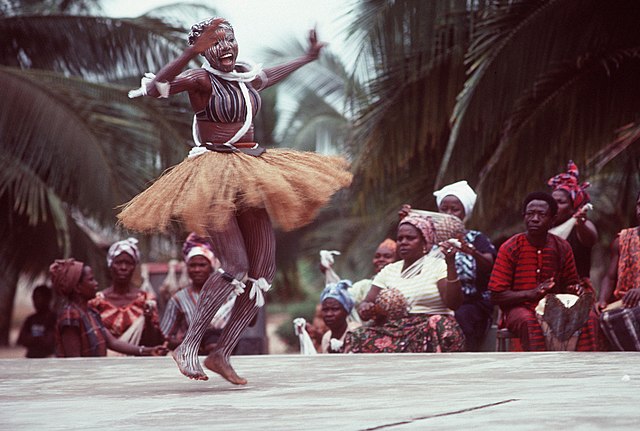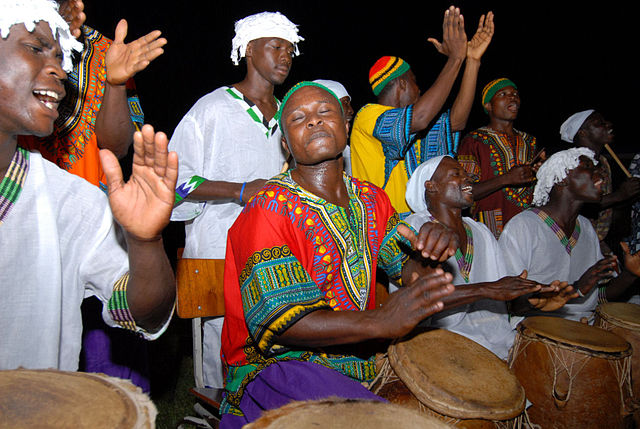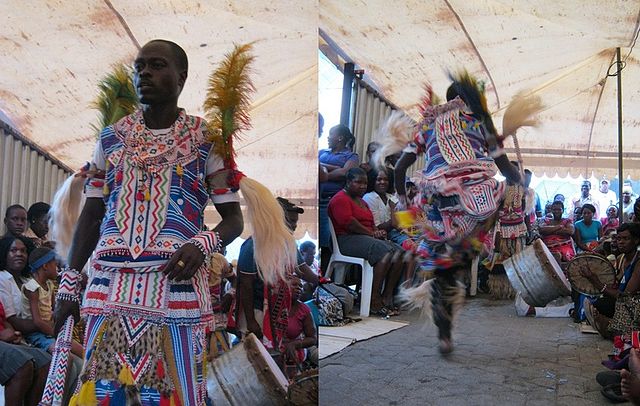African dance refers to the various dance styles of sub-Saharan Africa. These dances are closely connected with the traditional rhythms and music traditions of the region. Music and dancing is an integral part of many traditional African societies. Songs and dances facilitate teaching and promoting social values, celebrating special events and major life milestones, performing oral history and other recitations, and spiritual experiences. African dance uses the concepts of polyrhythm and total body articulation. African dances are a collective activity performed in large groups, with significant interaction between dancers and onlookers in the majority of styles.
Members from the Kankouran West African Dance Company perform at a ceremony in the Rose Garden, White House, in 2007
African dance
An African woman, wearing native garments, performs during a visit from participants in the West Africa Training Cruise 1983.
Traditional Maasai jumping dance
Rhythm in Sub-Saharan Africa
Sub-Saharan African music is characterised by a "strong rhythmic interest" that exhibits common characteristics in all regions of this vast territory, so that Arthur Morris Jones (1889–1980) has described the many local approaches as constituting one main system. C. K. Ladzekpo also affirms the profound homogeneity of approach. West African rhythmic techniques carried over the Atlantic were fundamental ingredients in various musical styles of the Americas: samba, forró, maracatu and coco in Brazil, Afro-Cuban music and Afro-American musical genres such as blues, jazz, rhythm & blues, funk, soul, reggae, hip hop, and rock and roll were thereby of immense importance in 20th century popular music. The drum is renowned throughout Africa.
African drum made by Gerald Achee
Drummers in Accra, Ghana
Traditional healer (sangoma) of South Africa dancing to the rhythm of the drum in celebration of his ancestors
Kids in Alexandra township, South Africa, playing around on their father's drums








